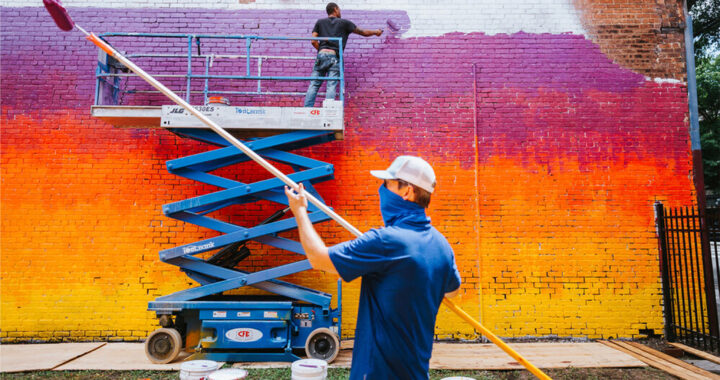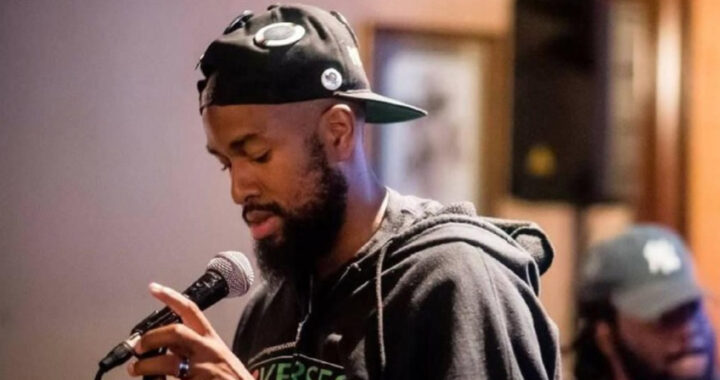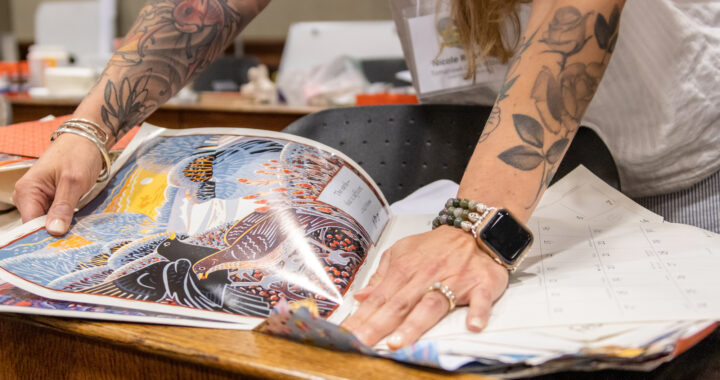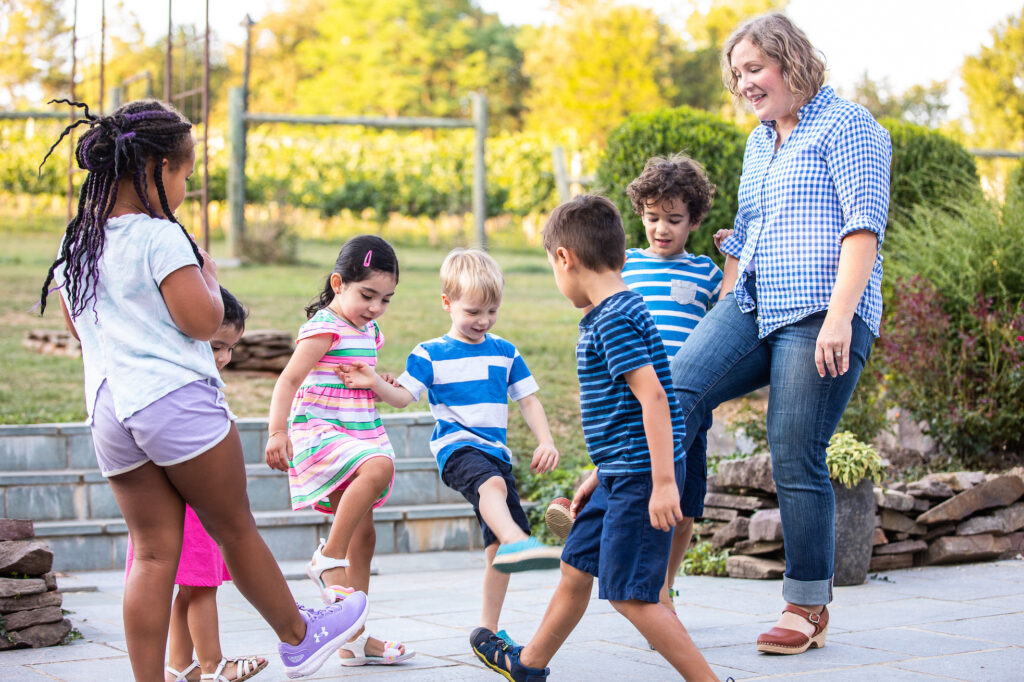
Mary Anderson is a long-time music educator and co-founder of My Music Starts Here.
Utilizing active music making in our classrooms is one of the most powerful tools we have to build connections, foster joyful play, celebrate diversity, and support the brain development of our young students. Current early childhood brain research and neuro-musical research show us exactly what happens in a child’s brain when they actively engage with music and how it supports the development of vital skills that children need to reach their full potential.
So, what is active music making, what does the research tell us, and how can you make this magic happen in your classroom?
Active Music Making is when children engage with developmentally appropriate music. This looks like giving children opportunities to:
- sing together
- move to music
- keep a steady beat
- learn fingerplays, movement songs, and sequence songs
- listen to high-quality music while imagining the stories being told through the music
This is when the fireworks go off in their brains and the real magic happens. Active music making harnesses the full power of music for children and is joyful and playful. This is very different from playing music in the background during another activity or playing music that is not developmentally appropriate for young children. In fact, passive music listening in the classroom or filling a classroom with music that is overstimulating to young children can backfire on us, even when we have the best intentions, because children learn to tune it out. The music becomes background noise or an unpleasant experience for them, so they learn coping mechanisms to either ignore it or block it out. What a missed opportunity!
Early Brain Development
Between the ages of 3 and 7, a child’s brain goes through a sensitive time period of development when it prunes to make room for new information and skills while also presenting a window of opportunity for active music learning.
Music learning at this age does not have to be specific to one instrument, but rather engaging with music through singing, keeping the steady beat, chanting poems, and moving to music. These activities not only lay the foundation for later musical achievement, but also release chemicals in the brain that support connection, empathy, and a general sense of wellbeing.
Further, when young children engage in active music making in these years, almost every single part of their brain lights up, forging new pathways for learning and processing that make future learning easier. Engaging in music helps keep a child’s brain flexible and strong, supporting their creativity and problem solving.
Language Development and Literacy Skills
Singing developmentally appropriate songs together and sharing fingerplays (poems and songs with hand movements – i.e. Itsy Bitsy Spider and Five Little Pumpkins) are incredible ways to connect with your students and build a strong classroom community. But these engaging and fun activities also do some heavy lifting when it comes to speech and language brain development!
They strengthen a child’s syntactic processing, leading to earlier language acquisition and the ability to organize words into a recognizable pattern. They enhance cognitive skills, shape their nervous system, and strengthen their auditory working memory – pieces that all come together to make communication easier. All of this while your students are joyfully playing, being silly, and connecting with you and each other.
One of the most powerful pieces of research demonstrates that children who can identify and keep a steady beat have an easier time with language acquisition and reading fluency. It is also shown that music is a powerful tool in supporting early reading skills with children from historically under-resourced communities. And the great news is that children LOVE to keep the beat to music and it is an easy whole group activity to fit into the school day!
Active Listening and Observation
Throughout our day, we are bombarded with noises and distractions. This can be especially true in an early childhood classroom setting. As educators, we need to do everything we can to support healthy listening skills in our children early so they have the ability to tune out distractions and focus on what is important. Background music, or inappropriate and overstimulating music, can have the opposite effect.
But when we use high-quality music, that encourages imagination, creativity, and storytelling, children tune in. They feel the emotion expressed through the music and can hear the various instruments and voices coming together to create one sound. And further, it strengthens a child’s ability to tell the difference between speech and noise, helping them to stay focused on the important stuff even in a noisy and distracting environment.
Start Tomorrow
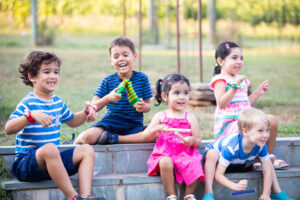
Active music making is not only engaging, but it has many developmental and social-emotional benefits.
I encourage you to start tomorrow. Integrating whole group music-making activities into your classroom is one of the most powerful tools we have as teachers to support our children in developing prosocial skills, empathy skills, and general interpersonal skills.
Set aside time to have all your students together and get the music going – sing together, move together, or keep a steady beat together. Find the three My Music Starts Here playlists on Spotify and choose a handful of songs that make you feel good. Choose a piece of music with an upbeat tempo and guide your students to keep the steady beat by patting their laps. Add in a few silly dance moves and you and your students will be joyfully engaging in music together, while strengthening the parts of their brain needed for literacy skill development.
Or, if you already have some music in mind, ask yourself these five questions to ensure that this music is high-quality, developmentally appropriate, and good enough to produce the intended outcomes with your students:
- Are there a lot of electronic instruments and sounds?
- Is there a really strong, heavy beat or bass line?
- Does it sound overproduced or kind of cheesy?
- If you listen to it more than once, are you annoyed by it?
- When you play it for children, does it make them overly hyper to the point that they have a hard time calming down once the song is over?
If you answer “yes” to any of these questions, keep looking for something more appropriate for your little learners, or only use it sparingly.
Keeping in mind all of this fantastic brain research that shows us the benefits of children actively making music, always go back to what you know in your heart. Participating in music is part of what makes us human. We are made to make music and have connected with each other through this art form even before spoken language developed. It feels good! So, when you sing and dance and play with your students, you are sharing a part of yourself in a way that nothing else can, and you are communicating love. What better gift could we possibly be giving to one another?
For more resources:
- My Music Starts Here website
- PBS “Songs and Stories” episodes
- Influence of music training on language development, 2014
- Beat synchronization predicts neural speech encoding and reading readiness in preschoolers, 2014
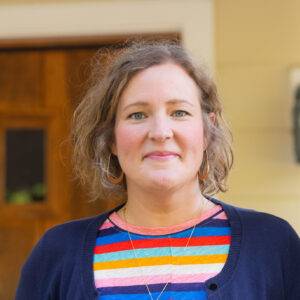 This guest post was written for Partners in the Arts by Mary Anderson. Mary received her master’s degree in music education from Boston University and is an experienced early childhood music educator, musician, performer, and thought leader whose mission is to engage, educate, and inspire all young children with high-quality music learning experiences that support their brain development and overall wellness. Mary is the founder of My Music Starts Here, a multi-platform music integration program for early childhood educators.
This guest post was written for Partners in the Arts by Mary Anderson. Mary received her master’s degree in music education from Boston University and is an experienced early childhood music educator, musician, performer, and thought leader whose mission is to engage, educate, and inspire all young children with high-quality music learning experiences that support their brain development and overall wellness. Mary is the founder of My Music Starts Here, a multi-platform music integration program for early childhood educators.
In 2020, in response to the pandemic-related school closures, Mary and her husband, Mike, developed, produced, and hosted a children’s television program for PBS called “Songs and Stories.” Mary works to empower educators by connecting the latest research with classroom practice so that every teacher can harness the full power of music to support our littlest learners and create a happy, healthy classroom environment.
Mary lives in Virginia with her husband, Mike, and their two sons and envisions a world in which every child – regardless of their race, gender, location, school, childcare, abilities, or socioeconomic status – has the opportunity to learn, grow, and be inspired by the power of music and to reach their highest potential.

